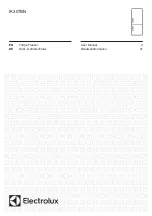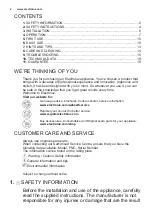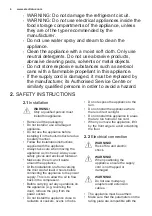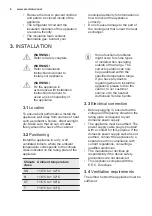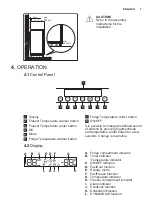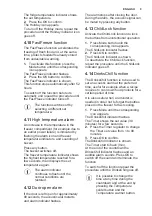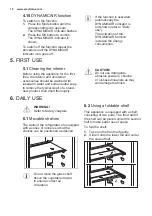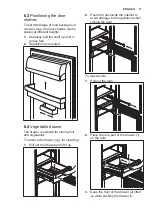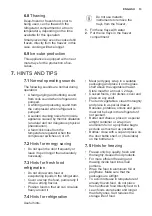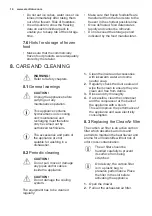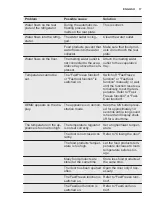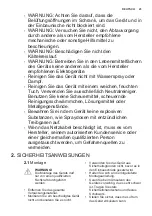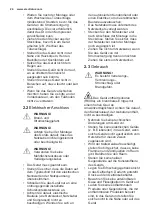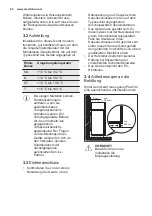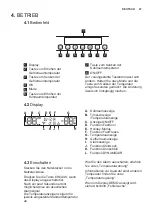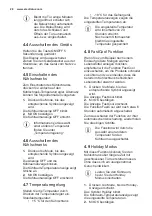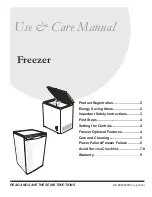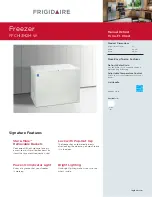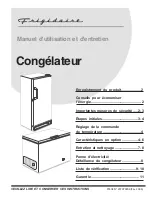
6.8 Thawing
Deep-frozen or frozen food, prior to
being used, can be thawed in the
refrigerator compartment or at room
temperature, depending on the time
available for this operation.
Small pieces may even be cooked still
frozen, directly from the freezer: in this
case, cooking will take longer.
6.9 Ice-cube production
This appliance is equipped with one or
more trays for the production of ice-
cubes.
Do not use metallic
instruments to remove the
trays from the freezer.
1. Fill these trays with water
2. Put the ice trays in the freezer
compartment.
7. HINTS AND TIPS
7.1 Normal operating sounds
The following sounds are normal during
operation:
• A faint gurgling and bubbling sound
from coils sound when refrigerant is
pumped.
• A whirring and pulsating sound from
the compressor when refrigerant is
pumped.
• A sudden cracking noise from inside
appliance caused by thermic dilatation
(a natural and not dangerous physical
phenomenon).
• A faint click noise from the
temperature regulator when the
compressor switches on or off.
7.2 Hints for energy saving
• Do not open the door frequently or
leave it open longer than absolutely
necessary.
7.3 Hints for fresh food
refrigeration
• Do not store warm food or
evaporating liquids in the refrigerator.
• Cover or wrap the food, particularly if
it has a strong flavour.
• Position food so that air can circulate
freely around it.
7.4 Hints for refrigeration
Useful hints:
• Meat (all types): wrap in a suitable
packaging and place it on the glass
shelf above the vegetable drawer.
Store meat for at most 1-2 days.
• Cooked foods, cold dishes: cover and
place on any shelf.
• Fruit and vegetables: clean thoroughly
and place in a special drawer.
Bananas, potatoes, onions and garlic
must not be kept in the refrigerator if
not packed.
• Butter and cheese: place in a special
airtight container or wrap in an
aluminium foil or a polythene bag to
exclude as much air as possible.
• Bottles: close with a cap and place on
the door bottle shelf, or (if available)
on the bottle rack.
7.5 Hints for freezing
• Freeze only top quality, fresh and
thoroughly cleaned food products.
• For more efficient freezing and
thawing divide food into small
portions.
• Wrap the food in aluminium foil or
polythene. Make sure that the
packages are airtight.
• To avoid increase in temperature of
already frozen food, do not place
fresh unfrozen food directly next to it.
• Lean foods store better and longer
than fatty ones. Salt reduces the
storage life of food.
ENGLISH
13

